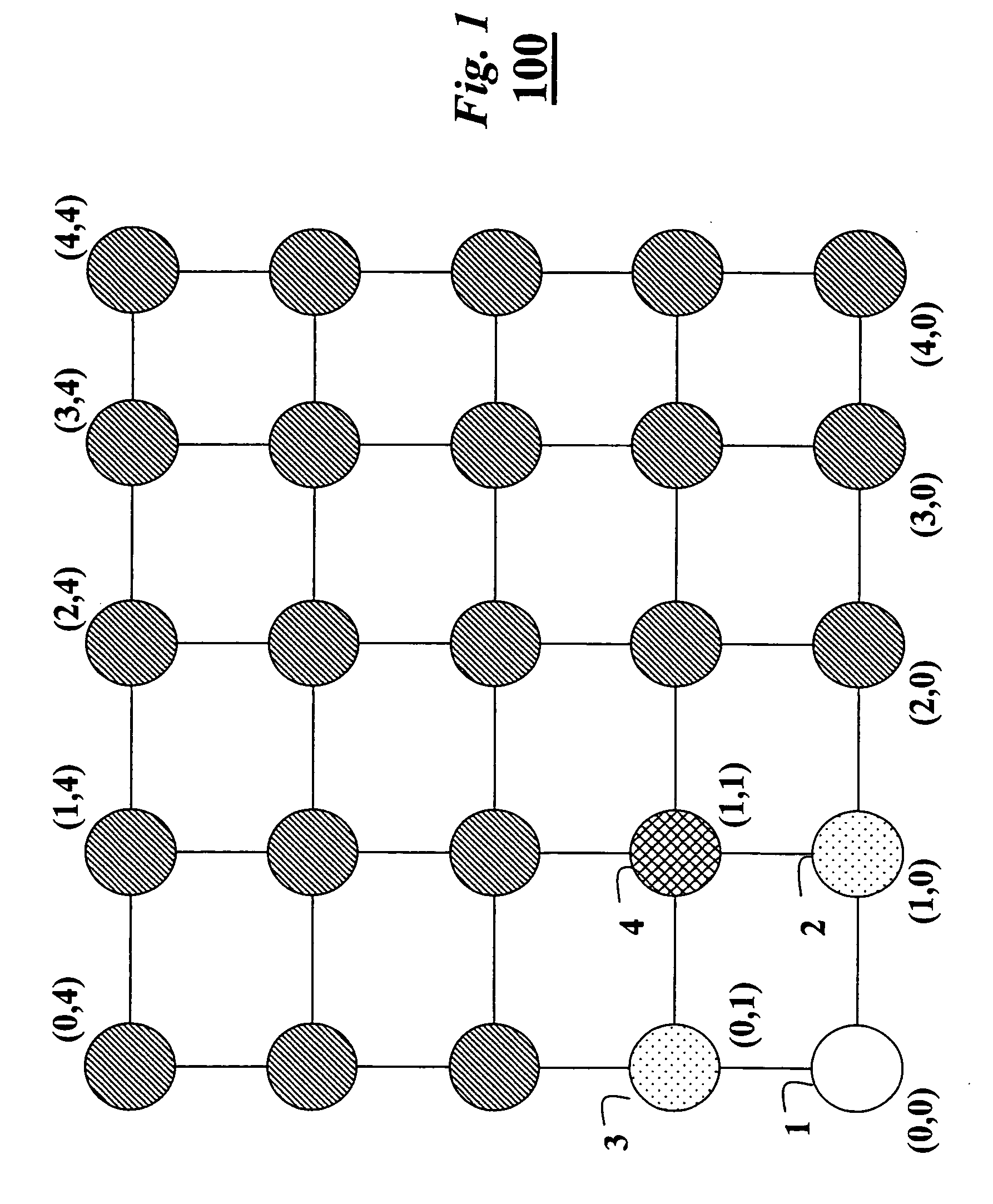Method for defining, allocating and assigning addresses in ad hoc wireless networks
a wireless network and address allocation technology, applied in the field of wireless networks, can solve the problems of limited addressing schemes used in conventional networks, low overhead, and difficulty in addressing allocation and assignment in ad hoc networks, and achieve the effect of reducing overhead
- Summary
- Abstract
- Description
- Claims
- Application Information
AI Technical Summary
Benefits of technology
Problems solved by technology
Method used
Image
Examples
Embodiment Construction
[0039]FIG. 1 shows an example N-dimensional grid 100 of nodes, where N is 2, in an ad hoc wireless sensor network according to an embodiment of our invention. Each intersection of the grid has coordinates, e.g., (0, 0), (0, 1), . . . (4, 4). The coordinates of the nodes or N-tuples are addresses of corresponding nodes. The coordinates have N fields that are equal to the dimensionality of the grid. For example, in two dimensions, each address has two fields.
[0040] A range of M values for a particular field is expressed by a number of bits that constitute the field. For example, if a full address is specified by 16 bits, then each field can be assigned eight bits for values in a range [0, 255]. Alternatively, the assignment is six and ten bits, i.e., here the value of M is different for the two particular fields. In other words, the grids can be an N dimensional hypercube, or generally a higher order parallelepiped. Additional dimensions can also be used.
[0041] A ‘corner’ node 1 can...
PUM
 Login to View More
Login to View More Abstract
Description
Claims
Application Information
 Login to View More
Login to View More - R&D
- Intellectual Property
- Life Sciences
- Materials
- Tech Scout
- Unparalleled Data Quality
- Higher Quality Content
- 60% Fewer Hallucinations
Browse by: Latest US Patents, China's latest patents, Technical Efficacy Thesaurus, Application Domain, Technology Topic, Popular Technical Reports.
© 2025 PatSnap. All rights reserved.Legal|Privacy policy|Modern Slavery Act Transparency Statement|Sitemap|About US| Contact US: help@patsnap.com



